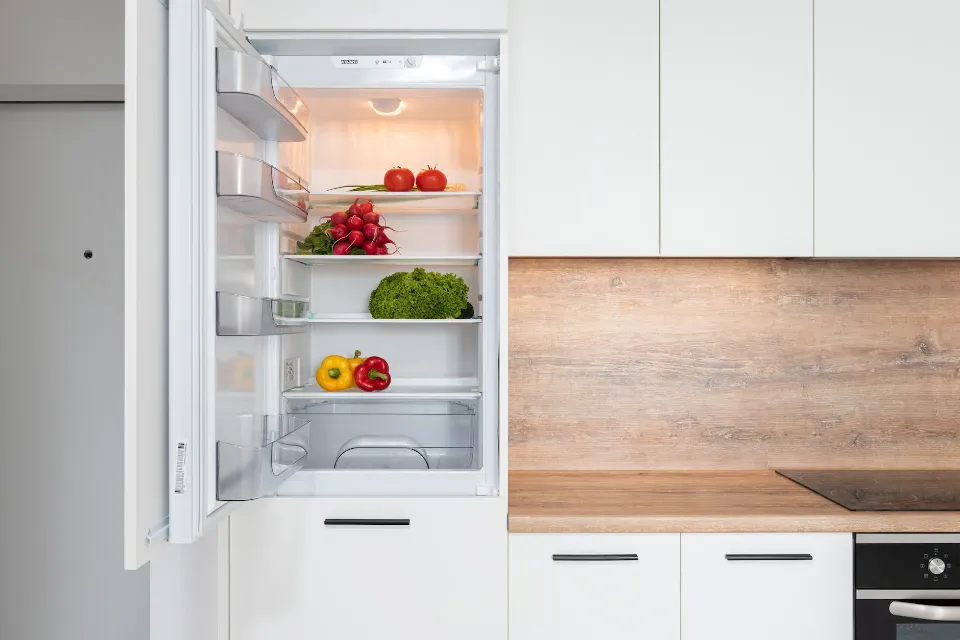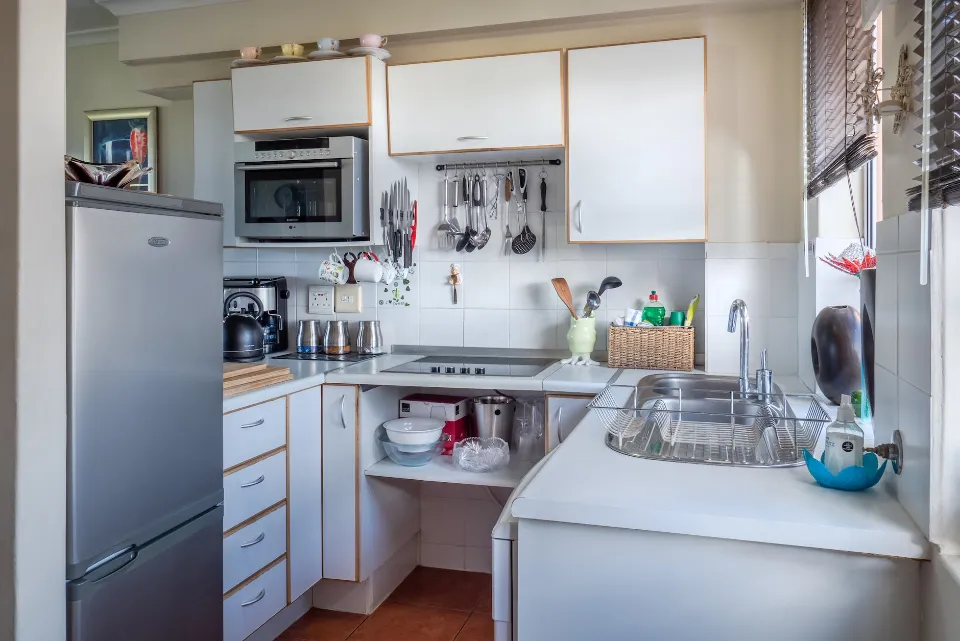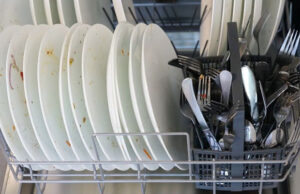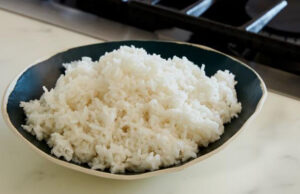When it comes to a household kitchen, there are a few major appliances that make up a kitchen and one question is where should fridge be in kitchen? To make sure your refrigerator is placed optimally, read these tips on various kitchen layout fridge placements.
A refrigerator should be placed close to an electrical outlet, for example, as these are obvious rules to follow. Overall, the fridge should always be located in close proximity to a bench with ample available space. The fridge should always be located in close proximity to a bench with ample available space.
We have put our thinking caps on and have come up with six points regarding design, energy efficiency, and convenience when it comes to fridge placement.
Table of Contents
Where Should a Refrigerator Be Placed in a Kitchen?
The refrigerator placement in your kitchen should contribute to a convenient cooking experience with natural flow. Unobstructed sightlines, easy traffic flow and proximity to working spaces should all be considered when deciding where to put your fridge:
Corners. To avoid obstructing sightlines or traffic routes, kitchen designers frequently place refrigerators in corners. When there are several cooks in the kitchen, an open door will be less of a hindrance. You don’t always work in front of the refrigerator, even though you might linger there. When the fridge is kept in a corner, you can quickly grab what you need before moving to the kitchen’s center for preparation and cooking. When placing doors with one side against a wall, make sure to leave enough space for them to open completely.
close to a bench or countertop. If a counter space isn’t available right next to the refrigerator, make sure one is available right across from it. You’ll need a spot to set groceries in the refrigerator as you load it and fresh ingredients as you take them out.
Part of a kitchen “working triangle.” This is the classic “rule” for kitchen layouts, though it should be considered more of a guide. The refrigerator, stove, and sink make up the triangle. Each line must be no shorter than 4 feet nor taller than 9 feet. A foot should be the maximum distance to cut off the triangle. Of course, a central island in your kitchen will probably slightly obstruct the triangle’s lines.
You May Also Like: Where To Put Microwave In Kitchen?
Tips for Placing Refrigerator
Even though limitations and practical considerations will serve as your primary guides, be sure to keep these professional advice in mind.
1. Consider Fridge Position With the Kitchen Triangle in Mind
The layout of your kitchen should be your first priority. Even among the six different kitchen layout types, each one is unique despite how straightforward it may seem. A refrigerator might only fit in a certain number of locations depending on the size of your room.
The kitchen triangle design rule is a good place to start. The refrigerator, oven, and sink should be placed on your floor plan to roughly form a triangle, improving the efficiency and flow of the space. This rule states that the three appliances that have the greatest influence on your kitchen’s layout should be placed in this manner. Therefore, it will be useful to consider where a kitchen sink should be while determining the best locations for an oven and a refrigerator.
The goal of the kitchen triangle, according to Adrian Bergman, senior designer at British Standard by Plain English(opens in new tab), “is to allow you to move seamlessly and easily between working areas of the kitchen.” While this is not a rigid rule, we would still suggest keeping it in mind, regardless of the size and shape of your kitchen.
2. Place the Refrigerator Near Your ‘Food Zone’
Your kitchen should be set up in such a way that all of the food is kept in one place. To make packing groceries and gathering ingredients for cooking and food preparation easier, consider placing your refrigerator close to your pantry or the cabinets where dried foods, such as pasta, rice, tins, and even cookies, are kept.

It will save you time and effort when organizing a pantry and refrigerator, for example, if you place them next to each other rather than on opposite sides of the kitchen from where your dried food is kept.
This placement can make your stored food items more accessible and increase the usability and efficiency of your kitchen, whether you place your fridge in a custom alcove, surrounded by cabinetry, or in an open space at the end of a countertop close to other food storage areas.
As stated by Evan Nelson, creative director at Nelson Cabinetry(opens in new tab), “take into account how frequently you use your refrigerator and the items you typically keep inside.” It makes sense to move the fridge to a more easily accessible location if you discover that you are frequently opening and closing the door. However, if you typically use your refrigerator to store items that don’t require cold storage (like condiments and leftovers), you might want to put it further away from busy areas.’
3. Ensure a Food Prep Counter is Nearby
Ideas for kitchen countertops and where to place a refrigerator in a kitchen should be taken into account jointly. For the most effective ingredient retrieval, Foolproof Living’s chef Aysegul Sanford says, “I like to have my refrigerator near my prepping station.” This is useful because it keeps you from constantly returning to look for new items.’
Cooking can be made simpler by placing your refrigerator close to a counter. It also offers a useful place to rest your groceries after a grocery run so you can unload and put things away quickly.
4. Avoid High-Traffic Thoroughfares
The kitchen is frequently a busy, multipurpose room that is used for cooking, eating, entertaining, relaxing, and as a route to the backyard.
Your refrigerator needs to be easily accessible, but you also need to try to avoid placing it in a high traffic area that people use to pass through or congregate in frequently. While it’s necessary to leave enough room for the doors to open completely, you don’t want them to be opening and closing all the time in a crowded area.
Lucy Searle, Homes & Gardens’ Editor in Chief advises, “If you have a big family and spend a lot of time in the kitchen, or you entertain frequently in the kitchen, make sure your fridge is placed where you can access it without obstructing the usability of the space.’
5. Double Up on Refrigerators
‘The ideal situation for a large, busy home is, in fact, two refrigerators: one at the edge of the kitchen filled with ingredients you need for cooking, and the other located either in the kitchen island, pantry, or utility room and used only for storing away drinks, even teen snacks, and any food you won’t be using until later in the week, according to Lucy Searle.
As a result, using the fridge—which is really only needed for meal preparation—becomes simple, and the other one can be constantly accessed by the family’s less orderly members (you know who you are) without upsetting the cook or interfering with the kitchen’s flow.
Can You Place a Refrigerator next to An Oven?
Traditionally, it it advised to place a refrigerator away from an oven and out of direct sunlight, to ensure that your fridge isn’t wasting energy and working unnecessarily to keep cool, ultimately so that it is as cold as it can be at all times.
However, as technology and design have improved over time, many contemporary refrigerator designs now feature efficient integrated cooling systems and stronger insulation, which means they will be better protected if placed close to or exposed to heat sources.
‘Usually there will be some cabinet space separating the refrigerator and oven if they are placed next to one another; this will then create a divide and some cooling between the two appliances,’ says Jennifer Ebert, Homes & Gardens’ digital editor.
Does Your Refrigerator Have to Be in the Kitchen?
No, your refrigerator does not have to be in the kitchen, it is completely up to you where you place it in your home – many homeowners have separate refrigerators and freezers in utilities, basements and garages.
The location of your refrigerator should be practical for you and your family, fit with the style of your overall kitchen and house, and be easy to access.
For instance, if you have a big family but don’t want a big refrigerator taking up space in your kitchen, make room for a smaller design there and keep the big fridge in a different room, like a utility.
If you frequently prepare food at home, such as baking and cooking, placing a refrigerator close to your main prep area, such as an island or a countertop around the perimeter, will make the process more convenient and enjoyable.
Final Thoughts on Where Should Fridge Be in Kitchen
The fridge is one of the biggest appliances in the house so finding a good place for it is not easy.
It’s critical to position the refrigerator out of direct sunlight, which can heat it up during the summer. The microwave and oven should also be kept far from the refrigerator because they both produce heat.
The fridge’s size and durability also take up a lot of room in the kitchen, which limits the amount of storage space that can be used.
Read More:
FAQs
Where Should You Not Put a Fridge?
Your refrigerator needs to be easily accessible, but you also need to try to avoid placing it in a high traffic area that people use to pass through or congregate in frequently.
Can I Put My Fridge in the Living Room?
Your refrigerator can be placed anywhere there is a crossroads in your house; some common ones include the living room and the kitchen, or the kitchen and the hallway. This solution is especially useful if you don’t want your refrigerator to be hidden inside your kitchen’s storage units.
How Should You Layout Your Fridge?
As much as possible, keep raw and cooked foods separate from each other. Place cooked and ready-to-eat items on the top shelf, always higher than the raw food, to avoid the chance of the latter dripping or falling on to cooked food and contaminating it.
What is the Perfect Kitchen Layout?
The U-Shape design is the most versatile layout for both large and small kitchens. It has counter space and storage on three of the walls, forming a useful work triangle for food preparation.


